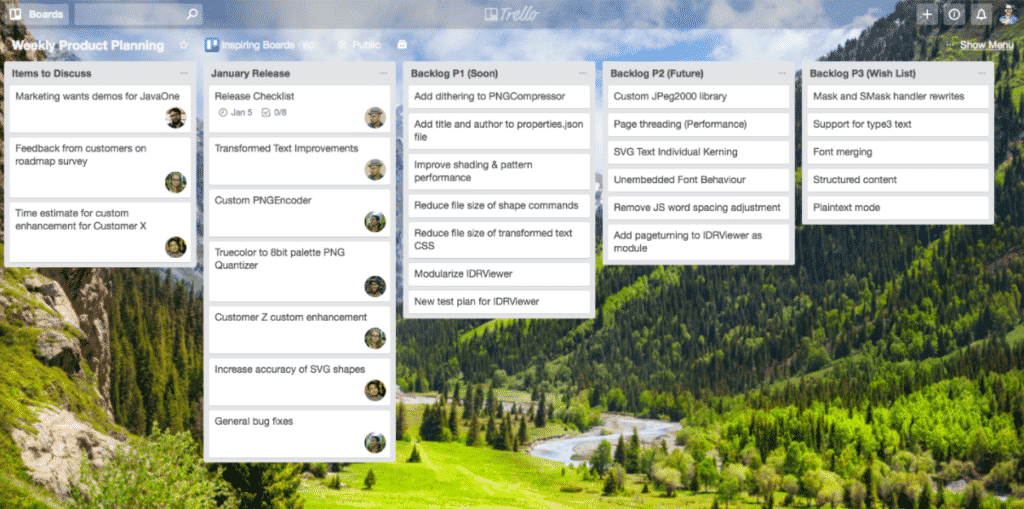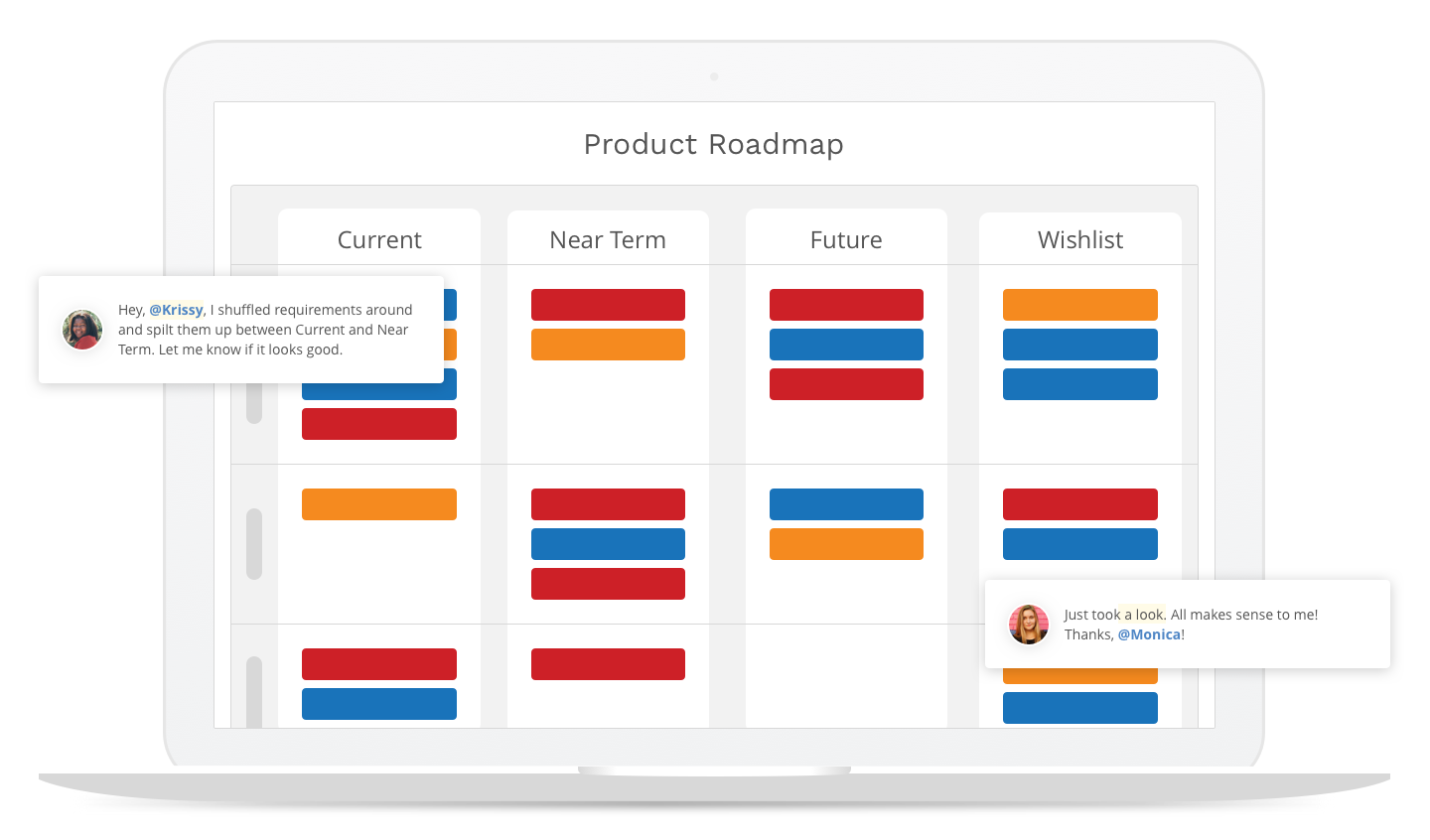Product managers rely on a variety of specialized tools to get their work done, including everything from issue tracking and project management apps, prototyping tools, and roadmapping software. Since product managers are often used to developing and working on high-level strategy, a Kanban-based project management app can be a great addition to any product manager’s toolkit.
A Brief History of Kanban
So where does the Kanban system of project management come from? Kanban traces its origins to supermarkets and automotive assembly lines. In the late 1940s, Toyota was searching for novel ways to further optimize their manufacturing process. Looking for inspiration outside of traditional manufacturing contexts, they began studying supermarkets, taking an interest in the way in which supermarket employees restocked grocery items based on inventory and customer behavior, rather than forecasting, vendor recommendations, or other data. Essentially, when a customer took one of the last jars of peanut butter off the shelf, the supermarket stockist refilled the shelf and ordered more peanut butter.
Toyota noticed that by only ordering items and restocking shelves as customers reduced supply, the supermarket was able to avoid waste and excess inventory. Toyota was inspired to develop a manufacturing process that applied this idea of just-in-time delivery, i.e. matching supply precisely to demand, to their automotive assembly lines. They developed a manufacturing system in which processes were completed in a sequence where each stage in the process is a “customer” of the preceding stages. Each individual stage or process provides only enough inventory, whether parts or assembly actions, to supply the next stage, eliminating excess parts or activities. For Toyota, this ensured higher-quality parts that were assembled more efficiently.
So what is a “Kanban”? The Japanese term “kanban” translates to “signboard,” and refers to the small, information-rich cards that let employees know what each stage in the process consists of, where materials move next in the warehouse, etc. The Kanban card in the automotive assembly line is similar to the cards on a grocery store shelf that contains price information, item numbers, descriptions, etc. So, what does this look like in a software context?
Fundamentals of a Kanban App

What does Kanban actually look like for software teams? Like a supermarket shelf or an assembly line of part buckets, software-based Kanban apps are purposely simple. They’re designed to offer teams a streamlined way to manage projects without excess functionality or visual noise. Kanban apps consist of three main parts: the Kanban board, the different lanes, lists, or buckets, and the Kanban card.
The Kanban board is the workspace that the lists and cards live on. Think of it as a big desktop, wall chart, or workspace. The lists, lanes, or buckets, live in columns on the board and help teams structure their workflows and processes. For example, a very simple set of lists would be something like “To Do,” “In Process,” and “Complete.” Each individual Kanban card contains an individual task, activity, or other items, as well as the relevant details needed to complete it.
A team member will grab a card from the “To Do” list and move it to the “In Process” list while they work on it. Once it’s done, they’ll move it to the “Done” list and start over with a new card from the “To Do” list. On the Kanban board, cards flow from left to right and new items are added and prioritized on the “To Do” list on a regular basis.
Tweet This:
“Kanban tools are highly visual and have the advantage of keeping things relatively simple compared to more in-depth project management tools.”
Kanban tools are highly visual and have the advantage of keeping things relatively simple compared to more in-depth project management tools. Kanban apps are designed to let users easily drag and drop items from one list to another to shepherd them through the process. Trello, for example, lets teams easily create boards for different projects or teams, design lists that make sense for their individual processes, and move cards through these workflows without any friction.
Trello, in particular, is also great because it’s easy to assign team members to different cards, tag team members in comments and mentions, tag and filter cards, add dates, and more, all while keeping things remarkably simple. ProductPlan’s Trello integration lets teams import Trello cards directly into their ProductPlan Table View. Users can also synchronize percent complete to quickly check on an item’s status without switching apps.
How to use Kanban: Tips for Product Managers
So how can product managers leverage the Kanban project management system? Kanban helps you structure your work around discrete tasks that need to be completed before you move on to other tasks. Rather than use strict timelines and due dates, things just move in a simple, this, then this, then this, order. For most product managers, this high-level approach is likely to make more sense and come more naturally than an in-depth project management tool.
There are lots of great project management tools that offer increased granularity, greater functionality, and more, but those features are really designed for project managers working on the nitty-gritty details of projects.
Kanban apps are a great fit for product managers looking for a lean project management system. Here are three ways product managers can leverage Kanban:
1. Use Kanban to Manage Feature Requests
One easy way product managers can use Kanban is to create a board dedicated to feature requests. Often, product managers receive feedback from customers from a number of disparate channels. Maybe they get an email from a customer with a suggestion. Maybe something comes in through a support channel. Maybe someone live-chats a sales rep with an idea or challenge. A Kanban board dedicated to feature requests like these makes it easy to quickly add the idea to your inbox.
You can structure your board to handle whatever kind of governance framework makes sense for you and your team. Maybe you have an unprioritized Inbox list that exists solely to take in new ideas. From there, suitable requests can be moved to a prioritized or approved To-Do list, and on to In Process, and Complete, etc.
Having such an easy way to jot down and organize ideas means it’s less likely all your feature requests will fall through the cracks of email, note apps, etc. Some Kanban apps, like Trello, make it easy to tag your cards. So it’s easy to think up a system of tags for requests: think a UI tag, a backend tag, an integration tag, etc. You can even add new items and edit existing ones from the mobile app.
Once you’ve added a new card for an idea you can assign it to other product managers, add comments, tags, descriptions, links to other resources like detailed requirements, etc. You can even make the board public so other teams like Sales, Customer Success, or Marketing know about the rough prioritization and status of different feature requests.
2. Kanban can Help Manage and Monitor Agile Development Work
With a simple Kanban approach to project management, it’s easy to manage and monitor an agile development team’s sprints and workflows. By creating a development-focused Kanban board, it’s possible to put everything in one place where the product team can maintain visibility into the backlog and the current sprint.
You can create lists or lanes for the Backlog, work that’s In Progress, and work that’s Complete. Maintaining a single point of accessibility on the development board means anyone can track the status of different items as the sprint moves forward. Product managers can get quick status updates by checking where cards are on the board, and developers can quickly access code, user stories, and requirements, from the details sections within each card. Changes to cards are live so everyone involved is operating from a single source of truth throughout the sprint.
Tweet This:
“For product teams looking for something in between literal post-it notes and a full-fledged issue-tracking system, Kanban apps are a great middle ground.”
Kanban is a great tool for product managers and development teams looking for a simple way to track items and sprints. Kanban is a happy medium between literal post-it notes and a full-fledged issue-tracking system.
3. Use Kanban to Supplement Your Roadmap
There’s one more way a Kanban app can help product managers and that involves using it as a kind of secondary roadmap or supplemental roadmap. The Kanban approach has become so popular because it lets you quickly organize items into different buckets, i.e. Planned, Doing, Done, etc., without committing to specific dates and deadlines.

With a Kanban “roadmap,” you can designate items that you might want to do in the future, but you’re not quite sure about yet. You can differentiate the things that are a little bit more aspirational from the things that you’re ready to commit to in the short term.
In fast-moving organizations, Kanban is a great way to avoid making the mistake of locking in a rigid, year-long roadmap that may or may not end up being the right course of action. Whereas timeline-based roadmaps and roadmaps without dates are high-level, future-looking documents that can span time horizons of months or years, a Kanban roadmap provides you a snapshot focus of your initiative’s current progress.
A Kanban “roadmap” is more of a high-level project management view than a long-term strategic view of a product’s future plans and objectives. But, it’s one that can be especially helpful for conveying certain information to particular internal audiences, like developers, support teams, and any other groups that have a hands-on role in the process.
Ideally, as a product manager, you’re relying on something like a Kanban board to keep track of project-level items while using a dedicated roadmap tool to develop and present your higher-level product vision.
Have more tips for how product managers can benefit from Kanban? Let us know in the comments!


